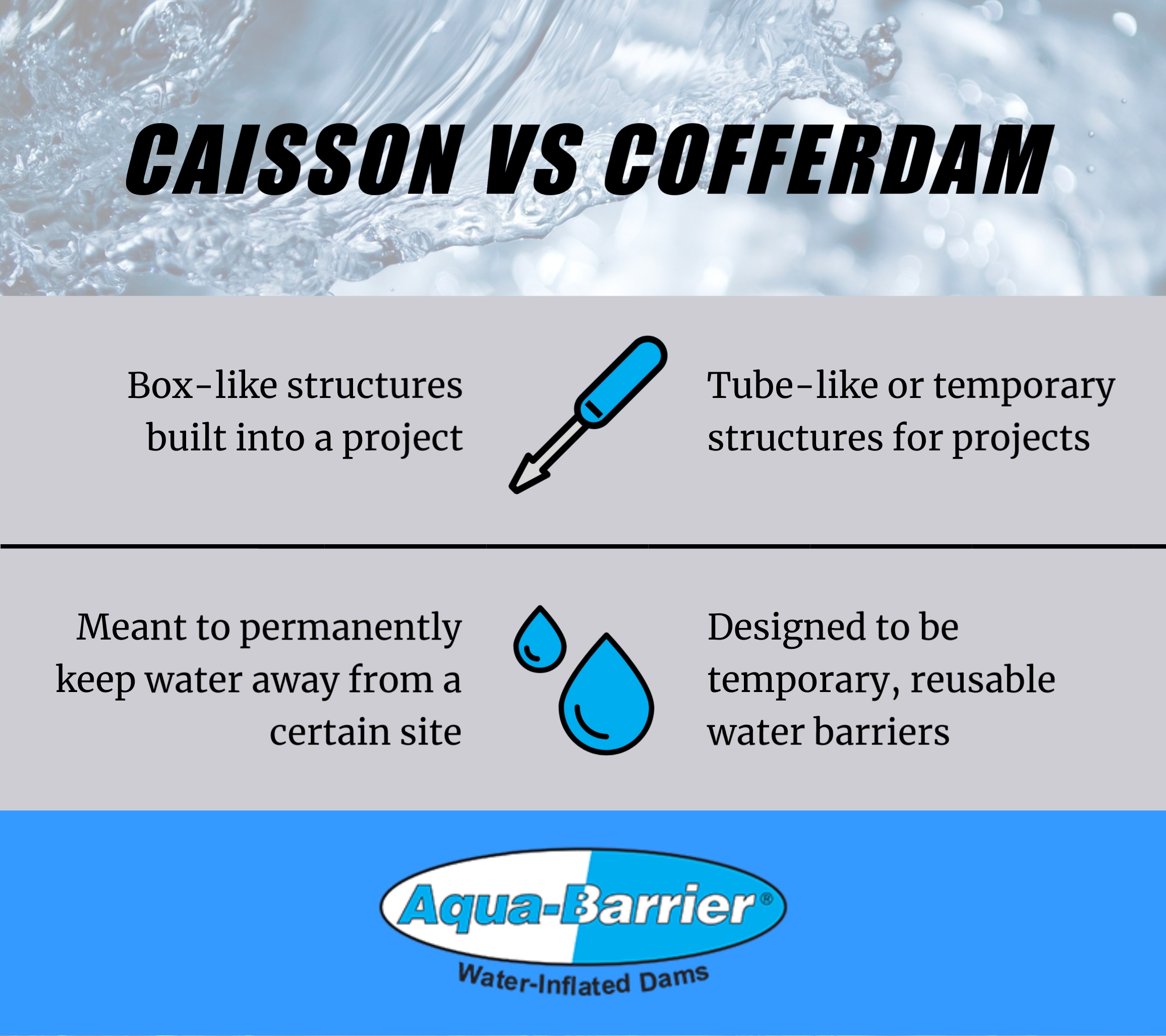When building a bridge or any other structure in water, a dewatering solution is crucial to completing the project successfully. All dewatering methods are essentially the same, specifically to create a dry work environment. There are, however, differences to note when examining a caisson vs. cofferdam. Becoming familiar with these terms will help you and your team choose the best solution for your next project.
[bctt tweet=”Ever heard of a caisson? As much as it might sound like a cofferdam, understanding the differences is crucial for your next project. Learn more here. ” username=”HSIServicesInc”]
Yes, there really is a difference between caissons and cofferdams. While construction novices may use the terms interchangeably, each has unique characteristics. Knowing the differences and how they apply to your construction project will ultimately improve the success of your project.


Defining Caissons
A caisson is a box-like structure that is permanently fixed within the water table of engineering projects. They are primarily used in the construction of bridges, piers, or similar structures. Depending on the size and scope of the project, there are three different caissons used most commonly.
- Open Caissons – Timber, steel, or concrete box that is open at the top and bottom of the structure. The walls are generally heavy and pumped with reinforced concrete to ensure a dry area.
- Box Caissons – Watertight boxes usually composed of timber or concrete that are open at the top. They are generally floated to the specific area and then sunk into place with a masonry pier.
- Pneumatic Caissons – Primarily used in underwater construction, these boxes are closed at the top and open at the bottom. Water is pushed out during the sinking process by using compressed air.
Defining Cofferdams
In comparison, cofferdams are temporary structures that are installed to divert water away from worksites. Cofferdams are most commonly used in new construction works or short-term maintenance projects of shallow bridges, piers, or boat ramps. Traditional cofferdams are filled with concrete or rock to restrict nearby water or river flow. Comparatively, inflatable cofferdams use water pumps to inflate themselves and create a temporary dam.
Pro Tip: AquaBarrier cofferdams are not only environmentally-friendly but easy to install. Save time and money by choosing a dewatering solution that your whole crew can use.
Caisson vs. Cofferdam
Not all building projects are created equal. With that being said, where a cofferdam could be installed, a caisson may not be applicable. Both caissons and cofferdams are watertight structures that can be used in the construction of submerged water areas.
The difference, however, lies within the scope of the project. Caissons are permanent structures found in the initial design construction, whereas cofferdams are temporary structures installed for necessary repairs or maintenance.
Solutions for Your Work Area
Are you building a bridge or pier near a large body of water? Do you have a preferred dewatering solution? High water levels could impede your project’s timeline so it’s crucial to prepare your worksite in advance. Whether it’s a caisson or cofferdam, choose the right water control solution for your next project.
Connect with our experienced sales team to learn why the AquaBarrier inflatable water dam is an excellent alternative to traditional cofferdams.


